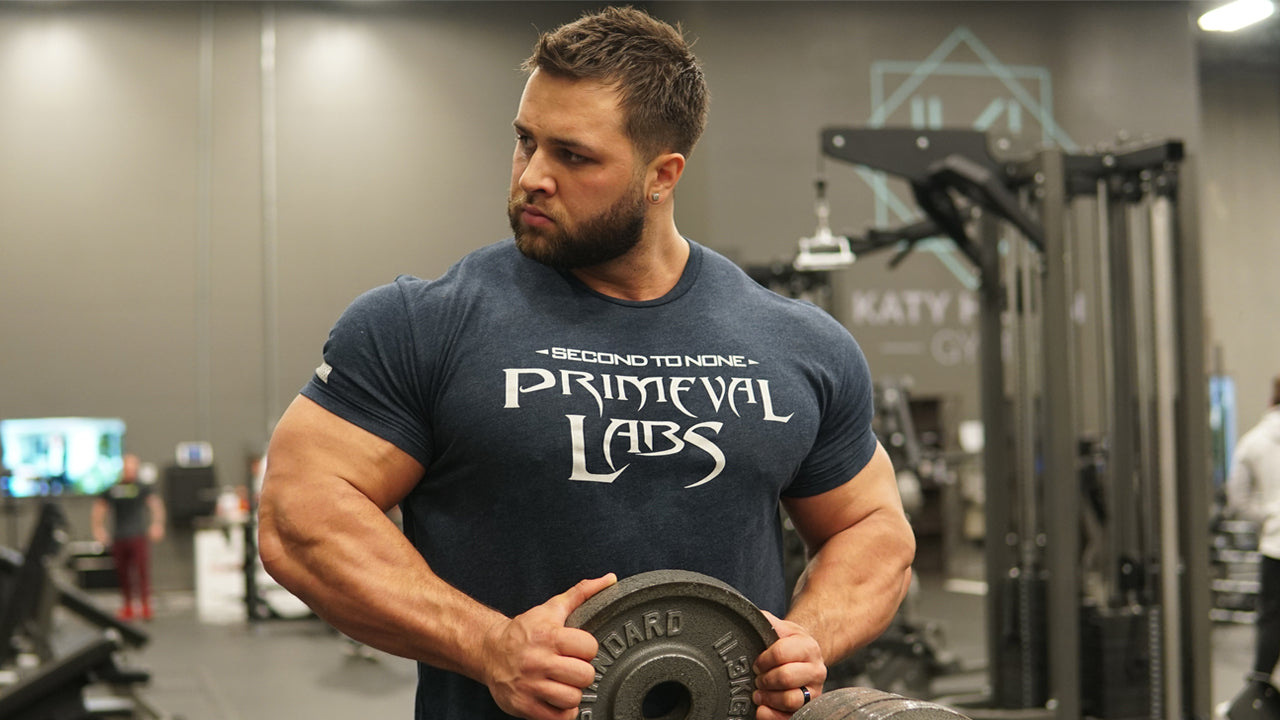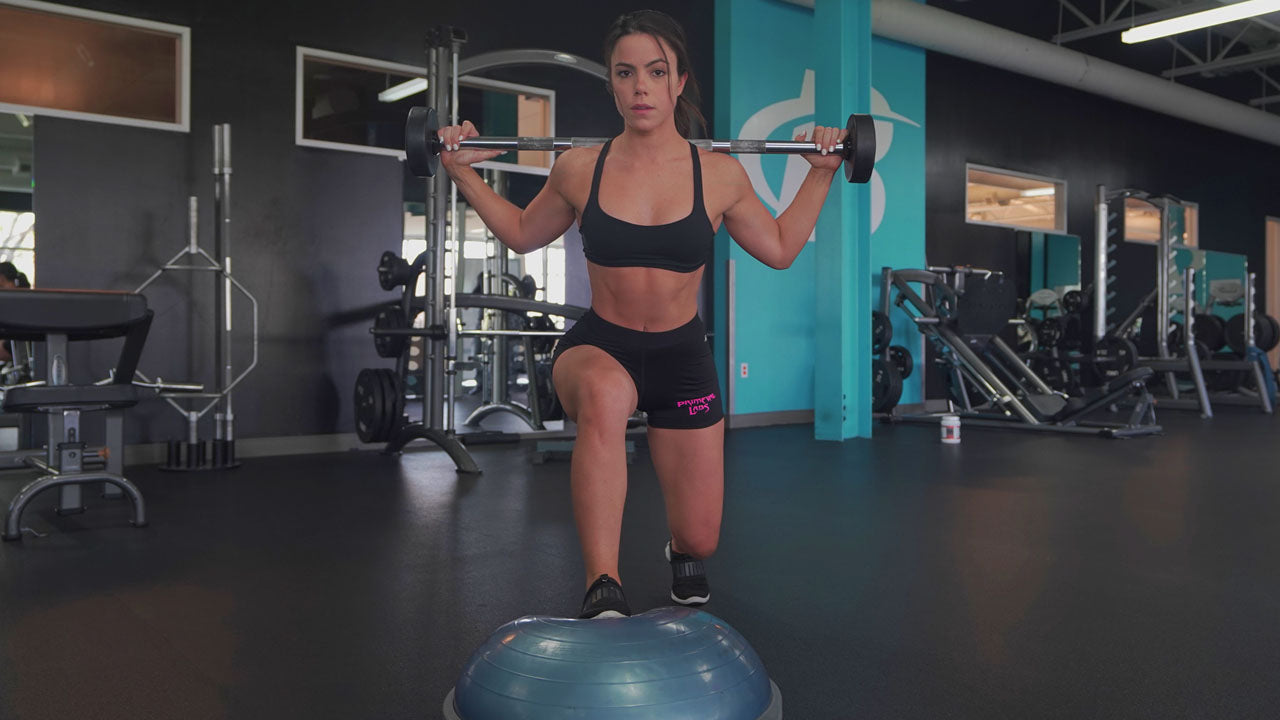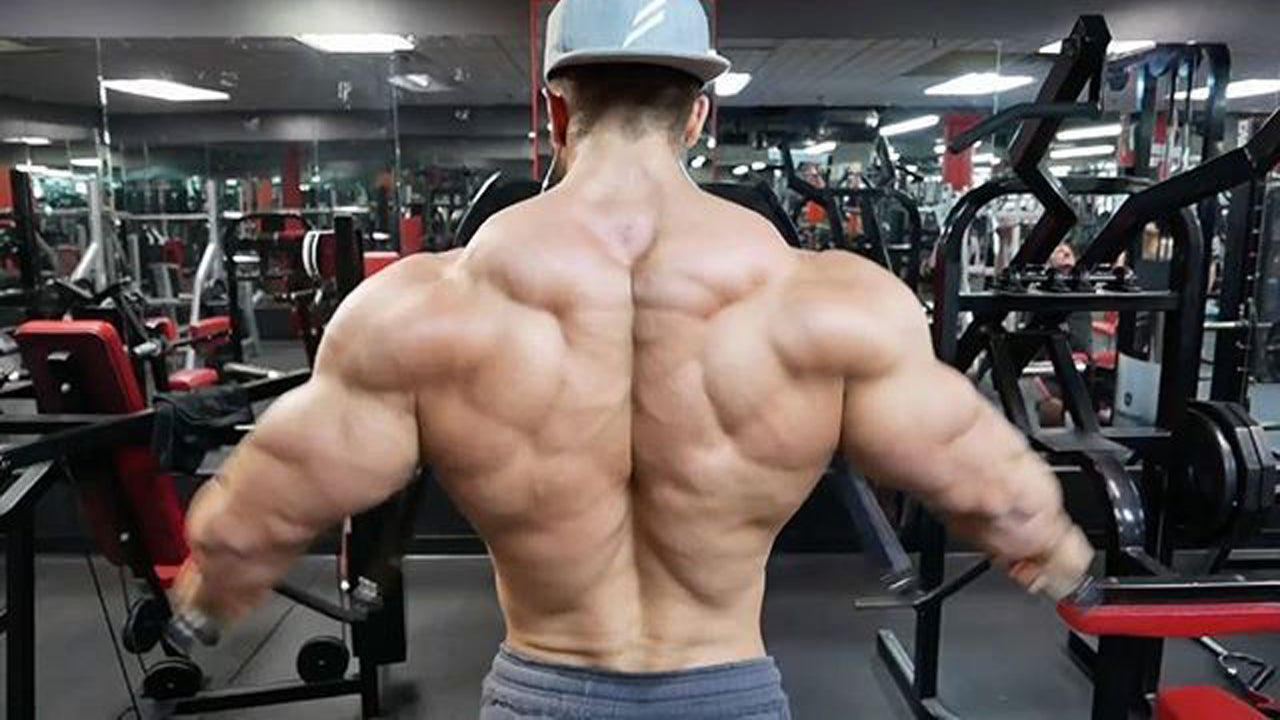No matter how hard you hit the gym each week, repping out set after set of bench press, you can’t seem to grow a big, ripped muscular chest. We've all been there.
In this article, we’re going to tell you how to improve your chest workouts so that you can start seeing real progress from your hard work in the gym.
While you might think, we’ll give you a list of “secret” exercises that will help magically spark growth in your chest. The truth is, that there are no “magical” exercises for how to grow a bigger chest.
More likely than not, you just need to make a few small tweaks and correct a few form errors to get more from your current chest workouts and start seeing gains in both size and strength.
We present our top 8 tips to help you learn how to grow your chest start making gains!
Let’s go!
8 Tips for a Better Chest Workout
1. Maintain a “Proud” Chest
Starting your chest workout in the proper position sets you up for better chest development. Many chest workouts can be sabotaged their chest from the get-go by not setting up in the "proud” chest position.
In this "proud" chest"position, your chest is “puffed” out, shoulders and shoulder blades are pulled down, and back retracted and depressed. Beginning in this position places the pecs on stretch.
When you allow the shoulders to round forward, the chest caves in, which both reduces tension on the pecs and puts a lot of stress on your AC joint and connective tissue around the shoulder. Performing chest presses with a “shoulder-forward” setup leads to substandard chest development and a pair of very irritated shoulder joints.
Before you perform your first press, be it dumbbell, barbell, kettlebell, or Swiss bar, make sure you’re sticking your chest out and retracting and depressing the shoulders. This will save you a lot of unwanted wear and tear on your shoulder joints and lead to substantially better chest development.
2. Slow Down
Have you ever seen those guys at the gym who look like they’re trying to set the record for the fastest person to complete a set of 10 on the bench press? These are the same characters who do all sorts of grunting, heaving and slamming the weights down after a set. You are trying to work the muscles to failure, not complete the most reps.
It’s hard to maximize chest development if you’re bouncing the weight off of your chest and using momentum to lift and lower the weight. In these instances, the pecs are only doing a fraction of the work that they should be. Muscles tend to respond better to slow and steady reps.
If you’re someone who likes to bounce their reps on the bench press (or really any other exercise for that matter), and wondered why you’re not seeing any growth, heed this advice -- SLOW DOWN.
When you slow down your reps, you eliminate momentum and force the intended muscles (which in this case are the pecs) to do the work, and reduce a lot of strain and stress on your wrists, shoulders, and elbows.
You can still lift the weight explosively, but make sure to “resist” the weight on the way down, and pause at the bottom, which eliminates the stretch reflex and forces more tension into the muscles.

3. Focus on “Squeezing” Instead of “Pushing” or “Pressing”
When it comes to developing any muscle (pecs, delts, lats, biceps, etc.), exercise selection matters. After all, you need to perform exercises that actually place tension on the muscles you want to train if you want to see results. Simply choosing the right exercises isn’t enough to ensure success in the gym. Execution also needs to be taken into account.
We’ve already touched on a few ways that your set-up and execution of an exercise can make or break your chest development. This tip requires you to tweak how you think of each chest exercise in your workout.
While they may be called “presses” or “pushes,” if you want to get more from every rep you perform, you need to think “squeeze”, not press.
For instance, don’t think of the bench press as simply pushing or pressing the weight up and down. Think of it as “squeezing” the pecs together as hard as you can to lift the weight, and then stretching them as much as you can during the lowering phase.
By adopting this mindset, you focus on squeezing the pecs as hard as you can, contracting the chest muscles as you move the weight away from your body. This subtle change in how you attack each rep will have a profound impact on your chest workouts.
The same thing applies to bodyweight exercises like push ups and dips -- don’t simply push away from the floor, but squeeze your pecs together to lift your body off of the floor.
4. Have a Variety of Exercises
Many lifters, typically those coming from a powerlifting background, think that the only exercise needed to build a big chest is the barbell bench press. While that may work for some individuals, most people will benefit from including a greater variety of exercises in their training program.
Now, we’re not talking about “muscle confusion” or changing the exercises up every time you hit the gym, but you should include at least a few different exercises in your training program so as to fully develop all aspects of the pecs as much as possible.
This means including exercises that train both major functions of the chest (flexion and adduction) as well as exercises that emphasize the upper, middle, and lower regions of the chest. You'll find that having a well-rounded workout is one of the fastest ways to learn how to grow the pecs.
The standard flat barbell bench press emphasizes the sternal head (middle) of the pecs, but this isn’t really enough to hit the clavicular head of the pecs, which is the area most guys struggle to grow.
That’s where exercises like the incline bench press and feet-elevated push-ups come in handy. They train all regions of the chest, but emphasize the upper pecs.
Similarly, exercises like the decline press and chest dips emphasize the lower pecs.
Don’t be afraid to include exercises such as the cable crossover, which might be termed “isolation” exercises. They specifically dial in on the horizontal adduction function of the pecs, which isn’t fully addressed by pressing movements.
5. Watch the Elbows
Elbow position can play a big factor in how presses affect the health of your joints as well as how much you feel the chest working.
Using a flared elbow position places lots of stress on the shoulders, particularly the rotator cuff.
A better option for your chest (and shoulder health), is to bring your elbows in slightly closer to the body (~30-45 degrees away from your torso). There’s no need to bring the elbows tucked into your side, as is the case with a close-grip bench press, but bringing them in slightly closer (and not flared) will help accentuate the pecs while also reducing strain on the shoulders.
6. Use Full Range of Motion
Execution (how you perform an exercise) is crucial to getting the most muscle-building bang for your buck when training, regardless of which muscle group you are training.
Performing a bunch of ugly half-reps with an excessively heavy weight serves no purpose when you are trying to maximize muscle growth.
Half repping also places increased stress on your joints, ligaments, and connective tissue, by and large due to the fact that most people “half-repping” are also using a poor technique (bouncing, swinging, heaving, etc.).
To get the most muscle-building “bang” from your chest workouts, use a complete range of motion on your presses, flies, and bodyweight exercises. Save the half-reps for the ego-lifters who would rather impress the cutie on the elliptical than see actual progress in their training and physique development.
7. Allow Recovery Time
Many lifters simply overwork their chest, and perform too much volume each week. Constantly pounding your chest without giving it sufficient time to recover limits growth and may lead to overtraining and/or injury. Recovery days are where your muscles are actually building mass, not in the gym.
While a certain bottom “threshold” exists for building muscle, the truth is, it’s probably a lot lower than you think.
The latest evidence-based recommendations note that between 10-20 “hard sets” per week provides a robust enough training stimulus to build muscle.
Now, this doesn’t mean you need to blast your chest with 20 sets of barbell and dumbbell presses in a single session.
A better way to get in your weekly volume is to spread it out across 2-3 training sessions. This allows you to get in an overall higher quality amount of work and training volume, which leads to bigger gains and better muscle growth. This is due to the time the muscle fibers have for healing between each training session.
For instance, let’s say you are an intermediate or advanced lifter and respond well to 15 sets for chest each week. Instead of banging out all 15 sets in a single workout, why not divide it across three workouts. One workout could include the flat bench press, the next could include a incline press, and the final could include cable crossovers.
This is a very bare-bones example; but just goes to show how you can spread out your volume across the week for a more effective training layout.
8. Use Intensification Techniques (Smartly)
There’s an ongoing battle in the muscle-building universe between volume and intensity.
We’ll save you a lot of head-scratching and keep it simple -- you need a bit of both.
You have to perform a sufficient enough amount of sets every week to stimulate the muscles, and at the same time, those sets have to be hard enough to stress the muscles, thereby forcing them to adapt and grow.
Now, you don’t have to take every set to failure, but a “hard” set should be in the neighborhood of 1-3 reps away from failure.
Going to failure can also be done, but it should be done sparingly and on an appropriate exercise.
Failure on a bench press is considerably more taxing (and dangerous), than going to failure on a machine press, pec dec, or bodyweight exercise like push-ups.
Intensification techniques are a great way to “finish off” the pecs or help bust through a plateau in your training. They SHOULD NOT be used for every set of your workout, but when implemented correctly, they can help spark muscle growth.
One of our favorite intensification techniques is to perform a mechanical drop set on push-ups as a finisher.
Perform as many reps as you can of chest dips. When you are 1 rep shy of failure, stop the set then immediately go into feet-elevated push-ups. When you hit failure on feet-elevated push-ups, you then rep out as many regular push ups as you can.
This drop set will flood your pecs with blood and give you a tremendous pump. Due to the taxing nature of this drop set, it’s advised you only do it 1-2 times at the end of your chest workout to finish off the session.
The Bottom Line
The chest is considered the centerpiece of your physique. There are many workouts that will produce minimal results if you don’t follow these 8 tips:
- Maintain a “Proud” Chest
- Slow Down
- Focus on “Squeezing” Instead of “Pushing” or “Pressing”
- Have a Variety of Exercises
- Watch the Elbows
- Use Full Range of Motion
- Performing Too Much Volume
- Use Intensification Techniques (Smartly)
Once you’ve got these down, you’ll know exactly how to grow your chest and start making gains!













Leave a comment
This site is protected by hCaptcha and the hCaptcha Privacy Policy and Terms of Service apply.